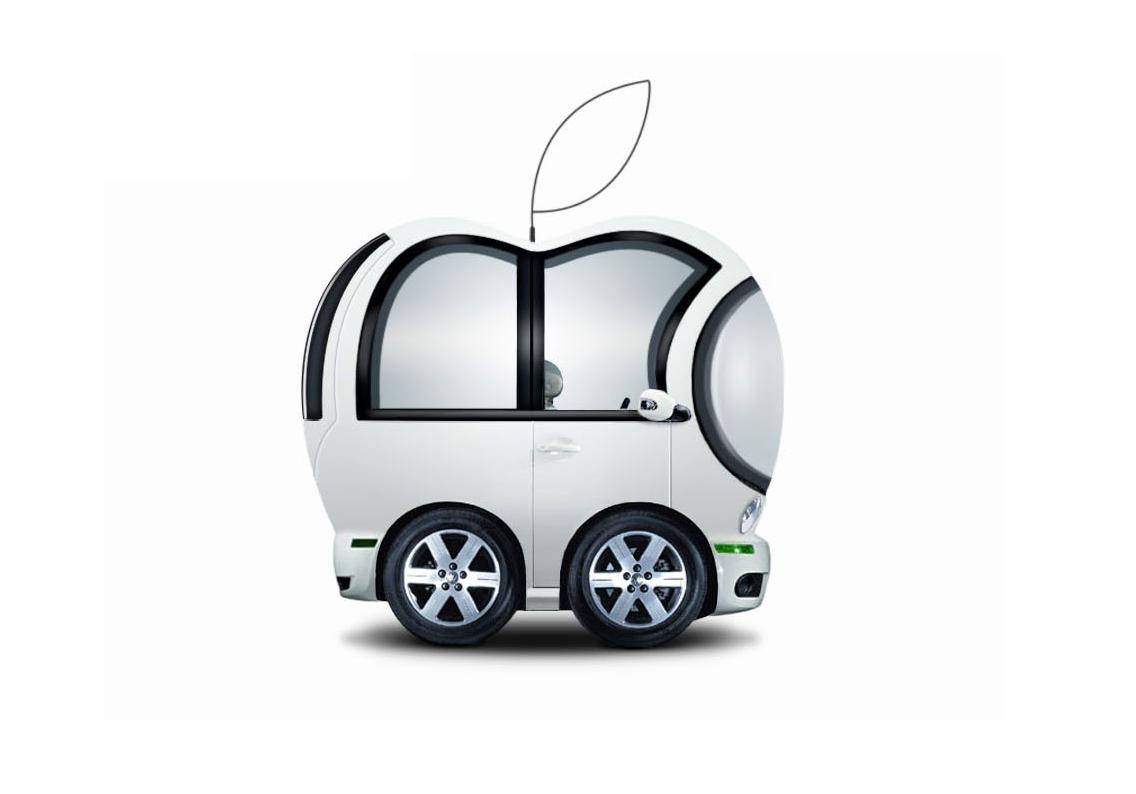
Remember the days when Apple was designing a self-driving electric vehicle? And remember how we haven’t heard much from Apple in a while about this?
Now, the company is back with an Apple self-driving car that includes a new way of using LIDAR. The aesthetics will leave you scratching your head.
Apple is an odd company— loved by trendy hipsters, reviled by open-source fanatics. The company has gone through spectacular highs and lows and now has more cash on hand than the US government. One thing anyone can agree on is that Apple used to make well-designed computers that were built to last. Hey, I still have a functioning 2003 Apple PowerBook. I can’t say the same about my 2010 MacBook Air … but I digress.
Apple was strangely absent from the EV race early on. That was until 2011, when we spotted a few Apple employees crawling through the Los Angeles Auto Show talking to carmakers. Remember, this was the Ford and Microsoft Sync glory days when Ford went from having two and a half people working on the project to double-digits. We asked why Apple had been strangely absent from the revolution. As per usual, they were mute but admitted having missed the boat and working on catching up.
Fast forward a few years, it was said a non-existent Apple car division should have bought Tesla. Seriously? We’re glad that one was put to rest. Today, we have no EVs from Cupertino, but we do have Apple Carplay in many cars, and soon may have self-driving cars using Apple IP. What will the company do next in the shadow of hard-to-fill Steve Jobs’s boots?
As Steve Hanley mentioned in our one of CleanTechnica meetings, that array of sensors looks like something found on the Death Star! But we think the beauty of being a computer and software maker is that they can concentrate first on the technology and later on its integration. This is something Apple has always done well.
In a PDF paper written by Yin Zhou and Oncel Tuzel on Arxiv, used by researchers for feedback, Apple describes a new way of using LiDAR, which it calls VoxelNet. Essentially, it helps autonomous vehicles (AVs) determine what obstacles are, whether pedestrians, cyclists, or otherwise.
Think of a Tesla AV on steroids — and, yeah, we can expect Tesla to soon counter this. A Reuters article states that research by Apple scientists show how their interpretation of AVs can better spot obstacles while using fewer sensors. As to why Apple would announce this now publicly, close to the holiday season, could be that it is looking for more researchers in that department. And, oh, we can see the grapevine growing by the hour.
From Reuters (via EV Obsession) here’s more info on the improvement:
“Self-driving cars often use a combination of normal two-dimensional cameras and depth-sensing ‘LiDAR’ units to recognize the world around them. While the units supply depth information, their low resolution makes it hard to detect small, faraway objects without help from a normal camera linked to it in real time.
“But with new software, the Apple researchers said they were able to get ‘highly encouraging results’ in spotting pedestrians and cyclists with just LiDAR data. They also wrote they were able to beat other approaches for detecting three-dimensional objects that use only LiDAR. The experiments were computer simulations and did not involve road tests.”
One thing is for sure — the final product will look much neater than the prototypes.
I saw one of these a few weeks ago pull up to an Apple shuttle stop-sit there for a few then drove off. pic.twitter.com/gUudZY1TIA
— idiggapple (@idiggapple) October 18, 2017
Looking back 6 to 7 years, I felt Microsoft was going to be the only game in town for in-car entertainment. Then swooped in Apple and Carplay, which can be found in many cars today. Sound familiar? Look at the computer industry in the late 1980s to mid-1990s. Then fast forward to the mid-2000s. Apple is here, then it’s gone, left for dead, and all the sudden, poof, it’s back with a vengeance.
Apple is also playing a different game to a different tune here. Of course, it declines to comment, as is usual. Academic papers are freely shared among colleagues and competition for a few reasons. They get feedback and also state who was working on what first. Tie this into Apple establishing its Apple Machine Learning Journal for its researchers in July and you can start to make out a strategy. Apple’s work never, if rarely, appears anywhere else. So far, the company has published no research on AVs there or elsewhere.
Is Apple working on AV? Most likely. Will it produce an EV? That question is still not out of the way. Remember that Foxconn, which manufactures some of its products, has an electric motorcycle using proprietary modules and software. One thing is for sure — Apple VoxelNet is an improvement that will peak the curiosity of EV makers.
Avots: Clean Technica